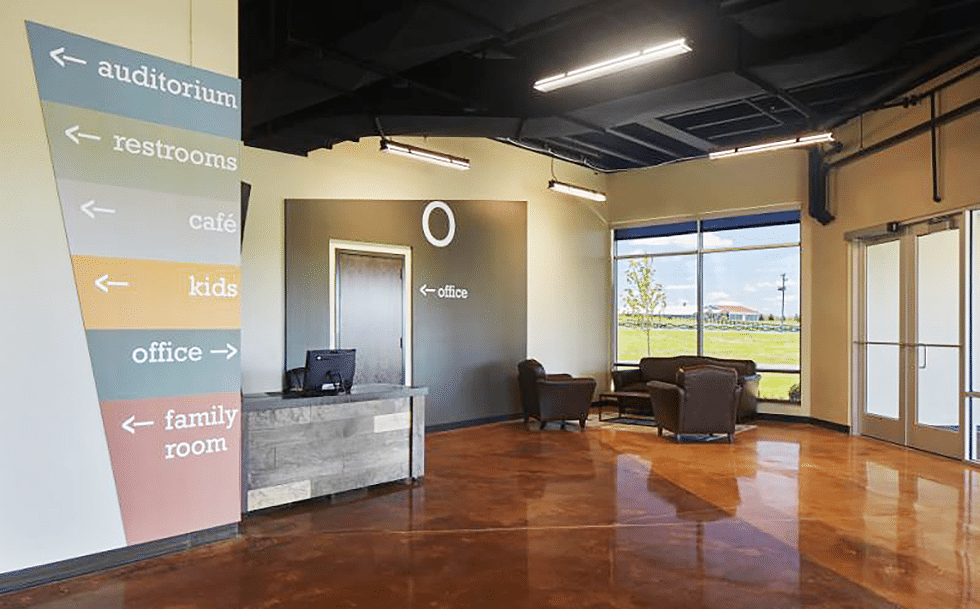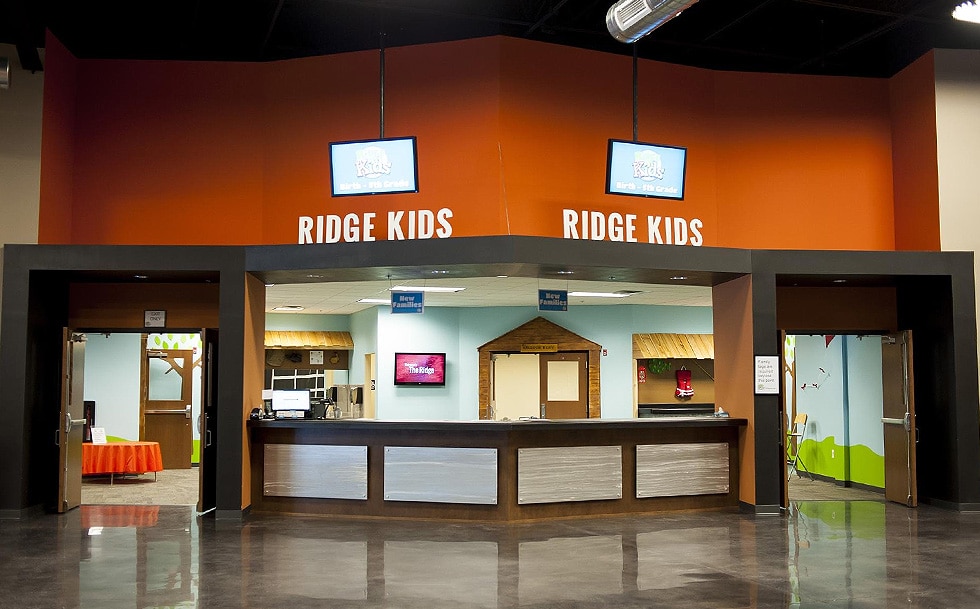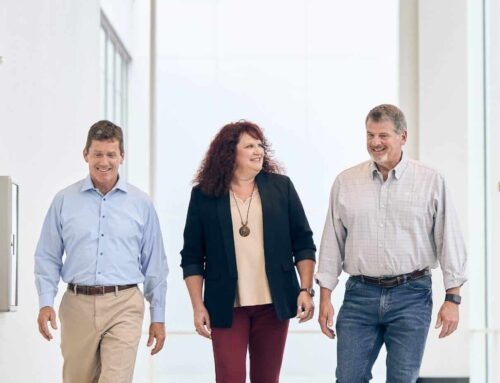15 minutes…. That’s all the time you have to make a solid first impression.
Long before the pastor ever steps behind the pulpit, people have decided if they’ll be back.
This is a generous amount of time compared to how quickly people decide about other aspects impacting your church.
Of course, each of these snap judgments can be overcome. But why start from a deficit? What if you could make an excellent first impression – online, in the parking lot, from your greeters, with your interior design – that set you up for success?
Church first impressions matter. You may not get a second chance. A bad first impression can cost more than you know.
The Cost of a Poor First Impression at Church
I consulted with one church that was processing whether they needed to renovate, remodel, relocate – or something else.
Attendance was dwindling. Young families, if they visited, didn’t return.
The church thought they needed to undertake a significant construction project to remedy the issue.
They were wrong.
They didn’t have a building problem. They had a first impression problem. Their signage wasn’t clear. The carpet smelled musty. And the kids’ Sunday School area was far removed from the sanctuary for corporate worship.
Few parents felt comfortable sending their kids to Sunday School in that environment – so they wouldn’t return for a second worship service.
When you don’t get your church’s first impressions right, you may attribute your church’s struggles to the wrong problems, seek the wrong solutions, and squander valuable resources.
If you have church building questions, we can help you find a better way.
5 Steps to Improving Your Church’s First Impression
Mastering first impressions requires intentionality. But it’s not beyond your reach. If you take the proper steps, you can make a first impression that will make people feel safe and welcome.
1: Prioritize the Senses
Church architecture has shifted throughout the centuries. Trends come and go. Currently, churches tend toward practicality and frugality.
This makes good sense. However, you shouldn’t overlook the visceral impact that physical senses have on first impressions. Here are three senses to prioritize.
Smell
Creating an inviting atmosphere involves engaging all the senses, including smell. Unpleasant odors like musty carpets, body odor, bathroom smells, and rotten food can create negative first impressions and signal underlying issues.
Musty carpet smells might indicate water problems leading to mold, which can impact health.
Here are some tips to address smell issues effectively:
- Resolve water problems to prevent mold.
- Regularly empty garbage and recycling in all rooms.
- Use air fresheners in bathrooms.
- Promote proper hygiene among the hospitality team.
Sight
Colors impact mood, so they should be selected with a purpose beyond just aesthetics. When considering the desired atmosphere for different areas, keep in mind:
- Lobby: Peaceful, playful, refreshing, moody.
- Kids’ area: Balance energetic kids with calming colors.
Making intentional, bold color choices based on desired emotions is key. As you delve into color selection, take a moment to reflect on emotional responses and the pivotal role color schemes play in shaping a harmonious and welcoming space.
Sound
The auditory environment of your church is as crucial as its visual elements. Begin by designing spaces for their primary purposes—private conversations, public worship, or personal contemplation.
It’s essential to tailor acoustics to suit these purposes. Implement the following strategies to optimize sound across various areas:
- Install speakers for worship and teaching in multiple spaces.
- Incorporate fabrics to absorb sound and enhance privacy.
Additionally, consider the diverse auditory needs of your congregation:
- Provide hearing assistance for older individuals.
- Address overstimulation concerns for people with special needs.
- Be sure to accommodate the preferences of individuals who are tone-deaf, making the music volume sufficient to cover any deficiencies.
Senses play a powerful role in the first impressions at your church. There are many good options for you to consider. Be intentional.
With these thoughtful considerations, your church can create an environment that engages and welcomes everyone who walks through its doors.
2: Display Clear and Accurate Signage
Most people who are new to your church feel a level of anxiety or insecurity. They may not know many people or anyone at all. It may have been a long time since they’ve been in a church building.
Clear signage will do wonders for putting people at ease. Be careful to avoid “insider language.” Not many people know what a narthex is.
Consider displaying signage accordingly if your church is located where multiple languages are spoken.
Having clear signage will serve everyone involved. New people may still ask where to go and greeters can still usher people to their desired destination.
Lakeland Community Church in Lake Geneva, WI
But if the signs are clear, people can choose to go independently if that makes them feel most comfortable.
3: Create an Intuitive Traffic Flow
Your church building may prevent you from creating the ideal traffic flow. Churches constructed in the early 20th century prioritized things differently than many churches today.
That’s ok. You can still create a traffic flow that fits your needs. Here’s how.
- Identify Areas of High Congestion
- Intentionally Position Traffic Bottlenecks
- Utilize the Great Outdoors
Your church building should make a first impression that invites people to engage as much – or little – as they desire at the time. An intuitive traffic flow does just that.
Don’t invite people to group together near areas that should be kept clear of traffic. Prayer teams, the pastor, and hospitality teams should all be positioned in a place conducive to their purpose without disrupting traffic flow.
Consider positioning your greeters in places to monitor the traffic and help people continue to make their way into or out of the area.
And don’t forget to encourage people to hang out outside. Picnic tables, playground equipment, and lawnspace are natural gathering areas.
4: Keep the Kids Safe
Child safety is paramount. No one can serve in a children’s ministry without a background check. We think the same principle should apply to the children’s area in the church building.
The kids’ area will significantly impact your church’s first impression. And safety is the most critical aspect.
Most parents won’t care how many slides, bells, or whistles a kids’ area has if it’s unsafe. Keep the following in mind to make a great first impression.
- Create an Obvious Check-In Station
- Prioritize Transparency
- Implement Proper Storage
Caregivers shouldn’t feel like explorers wandering through your church building in search of the kids’ check-in station. Make it obvious and inviting.
The Ridge Community Church in Greenfield, WI
When walking through your childcare space, caregivers should be able to see right into the classrooms. Consider installing Dutch Doors or large windows.
To ensure safety, your childcare workers should have no reason to leave their room unsupervised or understaffed. Toys, wipes, snacks, etc., must be in the room with the kids.
If possible, a private bathroom and changing station should also be included.
Going the extra mile to ensure kids’ safety will make a great first impression on parents.
5: Move the Welcome Center
Or create one if you haven’t already! To make a great church’s first impression, you must give people the freedom to engage on their terms.
A well-placed Welcome Center meets this need.
Your church may utilize different terminology. That’s ok. Regardless of the label, every church must have a space for people to get information and ask questions – when they’re ready.
The Welcome Center should include any pamphlets, gifts, or giveaways you offer. It should also include any forms people may want to fill out.
The key is positioning the Welcome Center in an area that first-time guests want to visit. In the recent past, churches tended to place Welcome Centers front and center.
This was a mistake.
The logic was reasonable. They wanted this area to be unmistakably clear so that visitors wouldn’t miss it.
However, churches overlooked that many first-time guests prefer to test the waters independently without being directed by anyone or feeling pressured.
You’ll have to thread a needle to do this well. Your Welcome Center should be positioned in an obvious public area so people won’t miss it and won’t feel trapped.
And at the same time, it needs to provide enough privacy so they won’t feel watched.
The perfect Welcome Center solution may not be possible in your facility. But some options are almost certainly better than others.
We would be honored to help you process the best solutions and guide you toward improving your church’s first impressions.
Let Catalyst Construction Help Create a Church-First Impression that Will Last
Don’t be overwhelmed. You’re not alone. We can help. Our team of thoughtful experts has helped guide 109 churches to create a facility that maximizes people’s first impressions.
We’ve also prevented people from making unnecessary renovations or construction investments by guiding them through a process like we’ve discussed in this article.
Our bottom line is seeing you flourish. We “build on purpose.” Our purpose is to walk with people – like you – through every step of the construction process so that you can maximize the resources you’ve been entrusted to steward.
Are you needing a new building, renovations to an existing one, or help reconfiguring spaces to enhance the first impressions at your church?
We can help. Reach out today for a free consultation!







